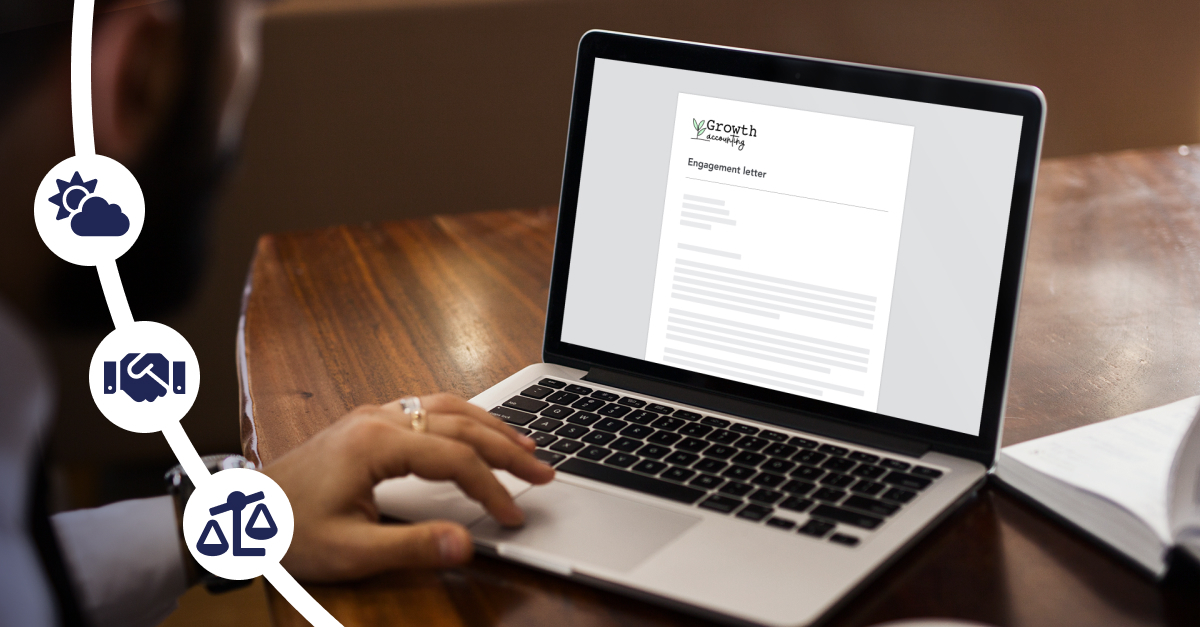3 ways engagement letters can improve your US tax season
The engagement letter is one of the most important client engagement tools that you have

(Disclaimer: This article is relevant for audiences based in the US).
Tax season for accountants can be a super stressful time of year. From needing to gather all the data, information and materials from clients to turning around and both preparing and filing the tax return on deadline...well, there’s just a ton of tasks and demands to juggle within a compressed number of days.
That said, with all those balls in the air, some tax accountants will skip one of the most important steps in working with clients—the engagement letter. In fact, whenever Ignition polls tax accountants on the subject, we find that almost a third of respondents never use an engagement letter with their clients. Yet a good engagement letter is one of the most important business tools that you have, setting your relationship with your client on a firm foundation that benefits you both.
Digging deeper, here are three big ways engagement letters can make the tax season experience less stressful and more successful overall:
1. Engagement letters provide critical clarity
Before starting any work for a client, having your client sign an engagement letter can provide vital information that can save you time, money, and angst later on during tax season. A good engagement letter provides clarity as to how you will work with clients and strives to eliminate potential questions or misunderstandings.
But here’s the catch: Effective engagement letters should have a detailed scope of services that lists exactly what you will do for that client. That means avoiding anything ambiguous, like “We will provide tax services.” And instead, stating specifics, like “We will prepare and e-file the federal and state 1040 tax returns.” Why? Because with the more generalized phrase, clients may assume you mean it’s ok for them to ask questions year-round. But you may mean only during tax season. Big difference, right?
Without making it too complex, outline the services, deliverables and expectations so they’re crystal clear, paying careful attention to those vague terms that can turn into traps.
Of note, a detailed scope of services also reduces scope creep and out-of-scope services. When your scope of services is detailed and clear, it’s easy to point back to the engagement letter when clients ask for work outside of that scope (which, by the way, can be a welcome indication of a number of great things happening, including their business growth, confidence in your services, a desire to buy into advisory service and more.)
For example, if my detailed scope of work includes having one tax planning session during the year, but then my client asks for a second one, we can both revisit the engagement letter, which states one session only. That said, I am always happy to send over a new engagement letter with this additional session at the cost of $300. This lets the client know I am honoring the original engagement letter and defines the price for this additional service before jumping into it.
On the topic of cost, engagement letters should always include your prices, plus when and how you will be paid for your services. For example: The price of preparing and filing the tax return is $500, paid half up front and half prior to filing; payment methods accepted are credit card or debit card only. This way, clients know exactly what they will pay, as well as the payment deadlines and methods, avoiding questions about your invoices later.
2. Engagement letters set expectations
One of the biggest frustrations tax accountants have is clients not providing timely information and waiting until the last minute to get the return done. Engagement letters can help solve this problem by setting expectations upfront.
For example, you might say that in order to file the 1120S tax return by March 15, the client should provide all necessary information to you by February 15. Otherwise, you will file an extension and the return won't be completed until after May 1.
Stating expectations like this is right to the point. It notifies your client what they need to do for you, as well as what you’ll do for them..
And what if they call to complain that they want their return filed on March 15 even though they didn’t get you their information until March 10? Kindly point them to the engagement letter they signed that set forth this expectation. It will all be there in black and white.
In addition to addressing deadlines, engagement letters can speak to issues around accounting records. Notably, incomplete accounting records.
Tackle this tough one by first committing to a strategy on how you’ll handle this troublesome scenario. Then make sure that information is also communicated in your engagement letter with precision and accuracy.
3. Engagement letters reduce risk
One of the main purposes of an engagement letter is to reduce risk for the accountant. When issues arise, one of the first questions that gets asked by an investigator or insurance agent is if an engagement letter is in place.
An engagement letter includes terms and conditions that may seem like a lot of legalese, but they are there for the protection and benefit of you and your client. For instance, in the case of a dispute, you can go back to the engagement letter to review how to remedy that dispute or handle that situation.
And what if you need to disengage from the client for issues that arise? And how about if the client doesn’t pay you?The engagement letter has provisions in place to help you manage these challenges professionally and tactfully. While this may seem unnecessary, it can help in those rare occasions where problems arise and may need to be adjudicated.
Without question, having engagement letters in place upon the commencement of services is a good best practice to follow in your firm. The engagement letter provides clarity with your client, sets expectations, and reduces your risk in serving the client. While it may seem like more work for you, this best practice saves you time, money, and stress in the long term.
With Ignition, we can reduce the amount of time it takes to handle your engagement letters and ensure you have one in place each time you engage with a client. Plus, our ready-made tax service templates for 1040, 1120C, 1120S, 1065, Tax Planning, and more help you get up and running fast.
To learn more about how Ignition can help streamline your tax season, start a free trial or watch our online demo.


